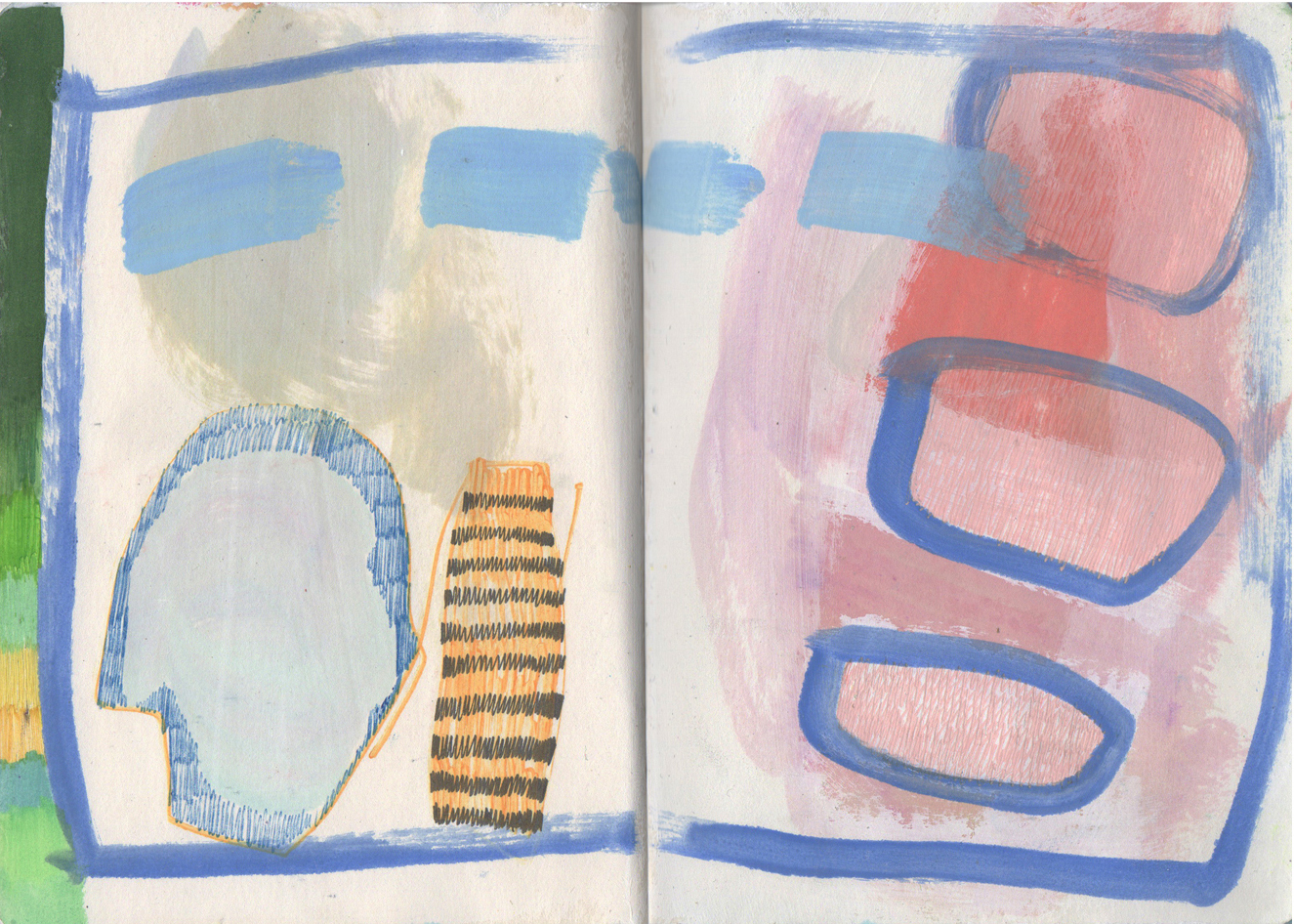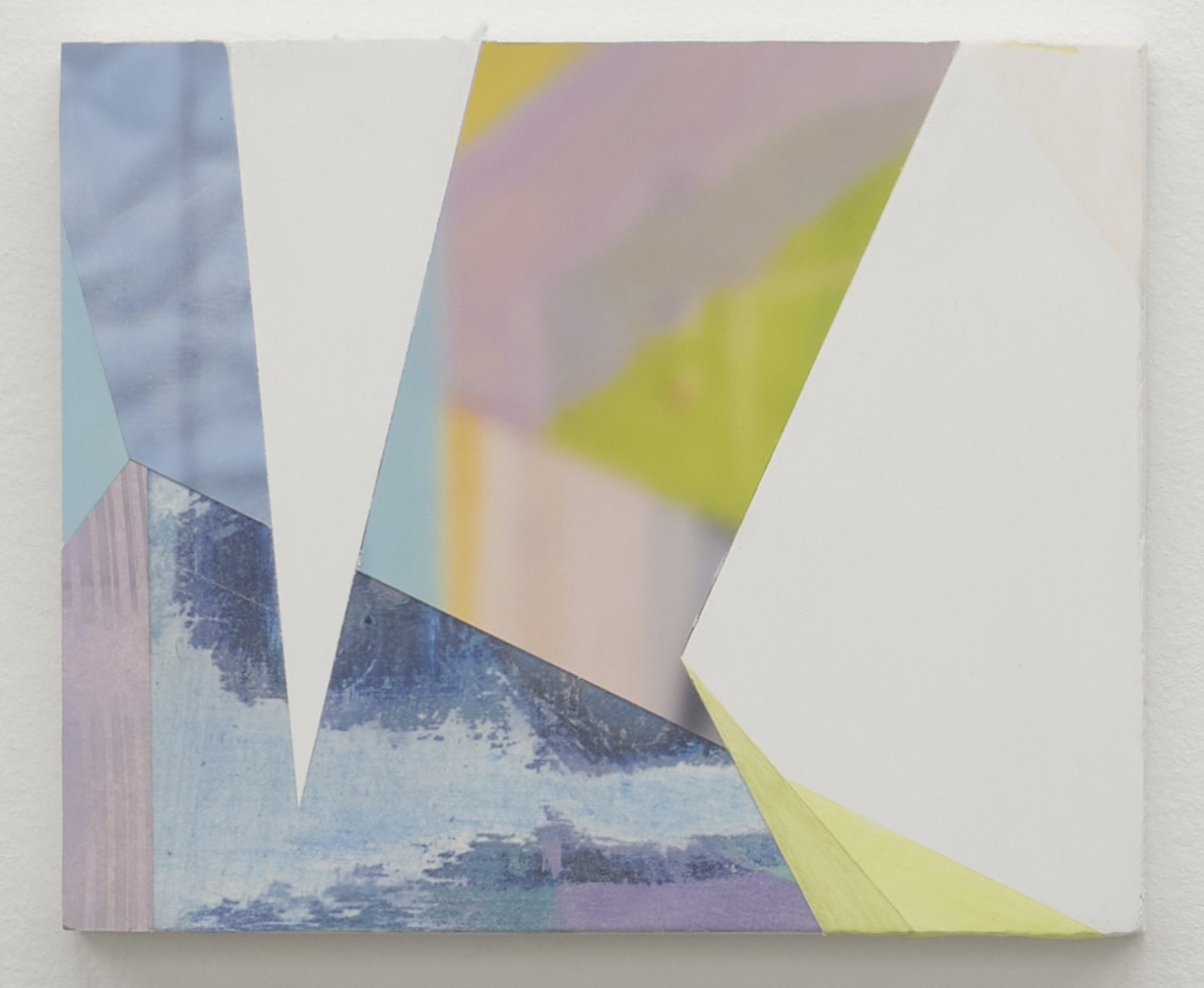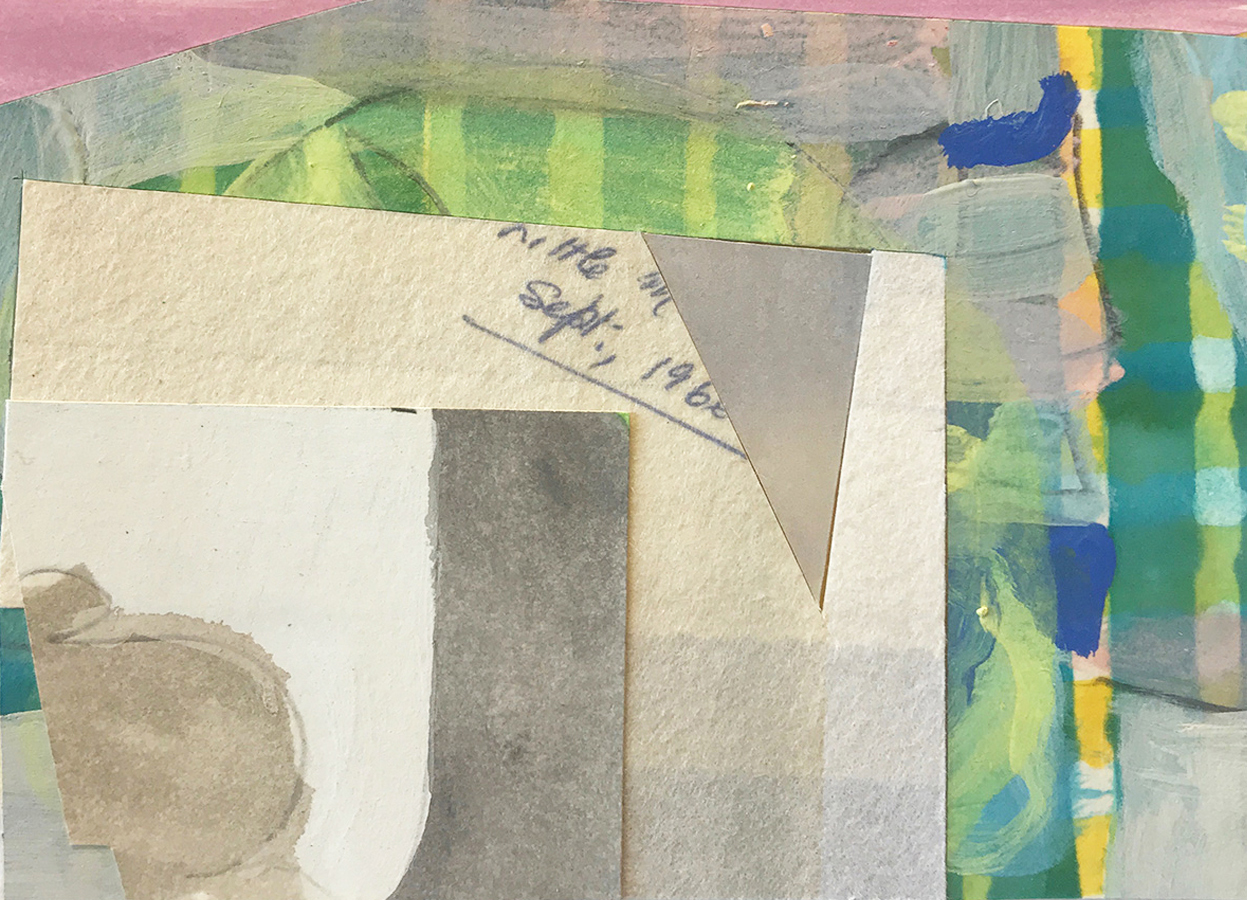1. What is your typical studio routine?
I tend to work more clearly and be more productive in the morning. A typical studio day is to arrive early and get straight to work picking up from where I left off the day before. My son was born last year so that has changed my studio routine. It has made it more condensed, and indeed more precious, I guess I see time differently now. I work across painting and collage where these two ways of working merge and speak to each other. I plan up to a certain point, but also tune into the work and allow it to dictate the next move. I work quite fast, but also spend a lot of time looking and reflecting on the work. My practice also includes printmaking and that has a strong influence on how I approach the painting process and the work I make with collage. In the last few years, I have worked a lot in sketchbooks which are great for recording and testing ideas, they become a repository that I pull from when I am working in the studio. I tend to work on quite a small scale, and this allows me to work across multiple pieces at once which is important to my thinking. I work with a diverse range of imagery, some reference gendered space and an Irish rural history, others are collected from everyday life, and other imagery and text I pull from the news or various sources around me. As I work through the imagery I am interested in finding links or commonalities, or not, what makes it through and what gets discarded. In my work I create platforms or spaces where these images or snippets of information can perform or take centre stage.
2. Many of us at QSS have previously studied at Ulster University at different stages of our education (BA, MFA, PhD). How did this experience influence your later attitude as a professional working artist?
I moved to Belfast in 2004 to undertake the MFA at Ulster University. Except for a few years in between I have been based in Belfast ever since. I undertook the MFA at a point when I was really keen to push and challenge my practice and the MFA offered that. I loved being surrounded by other artists whose practice was very different to my own and the questions that emerge from a group whose interests and artistic concerns cut across diverse art practices. Those two years were formative for me and enabled me to develop my practice and artistic concerns on various levels. While I was doing the MFA I had the opportunity to undertake some teaching and I loved it, it gave me the confidence and experience to develop my interest in that alongside my art practice. In 2013 I completed a practice-led PhD that examined contemporary women’s painting practices, it explored the expanded space of painting that included printmaking. My MFA experience set the scene for that research to happen. I feel very lucky to work alongside artists who are very generous with their knowledge and time and that really sums up my experiences at Ulster University and QSS Studios, that is a strong community of artists and lecturers who are generous with their time and knowledge.
3. There are many arts journals, which would you consult regularly?
I tend to read broadly across painting, printmaking and feminist studies. IMPACT printmaking journal is an online journal and is great for critical essays and exhibition reviews. Modern Painters is another journal I go to, also the Journal of Contemporary Painting, published by intellect is great for critical discussions on painting. Drawing:
Research, Theory, Practice is also a great resource for drawing practice. Also n-paradoxa, edited by Katy Deepwell is great for critical essays and discussions.
4. Have you completed any artist residencies or are there any you aspire to?
Since 2001 I completed residencies in Ireland and abroad, my first residency was at COOPERATIONS in Luxembourg, this was a six-month residency I completed when I finished my BA degree in 2001. Since then I completed residencies in Sri Lanka, Tyrone Guthrie Centre Annamakerrig, Monaghan and at the Leitrim Sculpture Centre in Manorhamilton. Each residency was a unique and valuable experience that enabled me to dig deep into my work at a particular moment as well as explore and develop new aspects of my practice. I think residencies can be fantastic, a very valuable thing for the development of ideas and new work. Not only that it enables new audiences for your practice as well as new networks.
About the artist:
Majella Clancy is an artist and lecturer based at QSS Studios Belfast. Her practice explores ideas of history and gendered space. In her work she create platforms or spaces where imagery from diverse sources come together to perform, act out, or take centre stage. In 2013 she completed a practice-led PhD at Ulster University that explored ideas of gender and painting practice. She has exhibited her work nationally and internationally, most recently, IMPACT 11, Printmaking Conference, Hong Kong (2021), How the Image Echoes, Part 2, Ulster University, Belfast, (2020), PrINT, invited artist, Munsterland Print Festival, Kloster Bentlage, Borken, Germany, (2019). Recent research papers include: ‘The Thinking I: Self, Materiality and Paint Practice’, Teaching Painting: Painting the New, Cambridge Scholars Press (forthcoming 2021), ‘Drawing Out: Encounter, Resistance and Collaboration’ in Drawing: Research Theory Practice, Intellect, UK (2020), ‘Ailleurs 2’, with Dr. Stephen Felmingham, Impact 10, International Printmaking Conference, Santander, Spain (2018). Forthcoming exhibitions include QSS Gallery Belfast in 2022.



